I recently began the process of relocating (2) QSC K8 speakers in Trinity Episcopal Church’s parish hall to cover the room on a different axis.
QSC – K8
What was previous a L/R rig facing West will be a mono main / mono delay rig facing North.
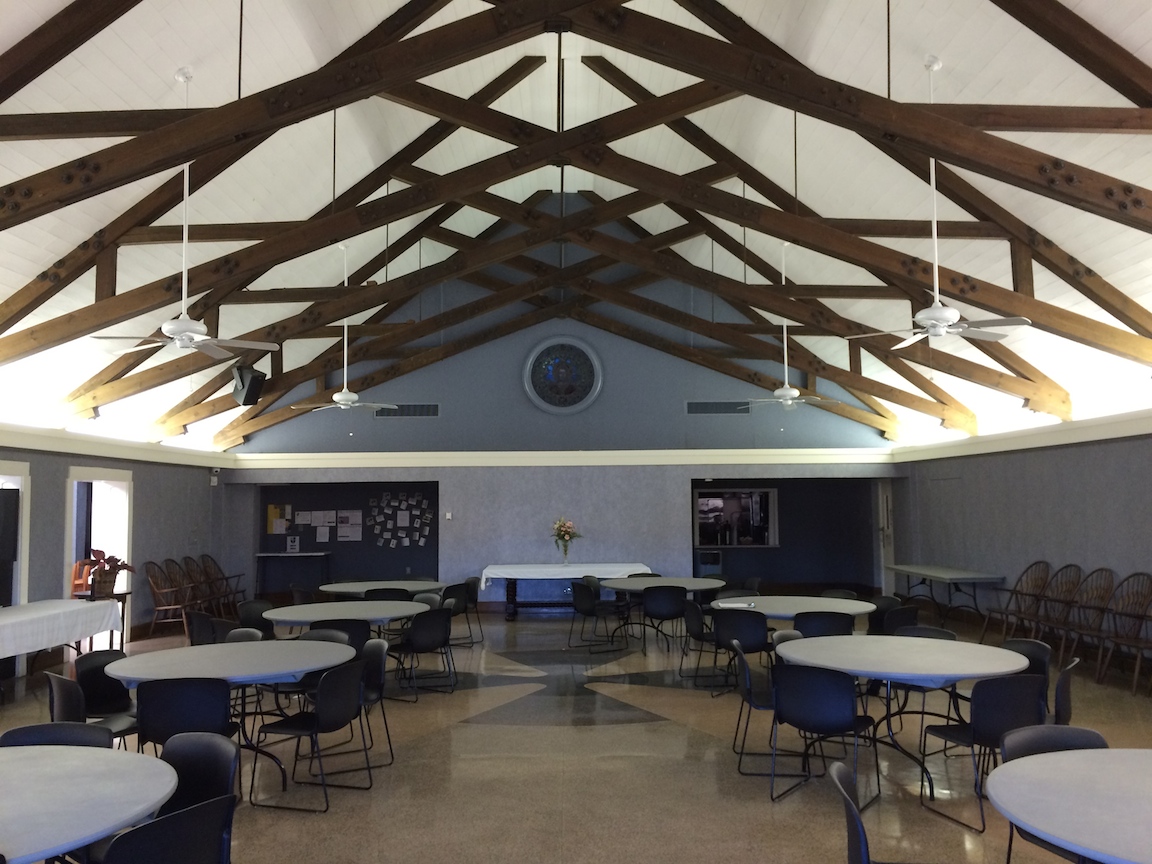
Custom mounting brackets were required to mate with the existing structure. Special thanks to True @ Toby Speakers for welding them together for me.
tobyspeakers.com
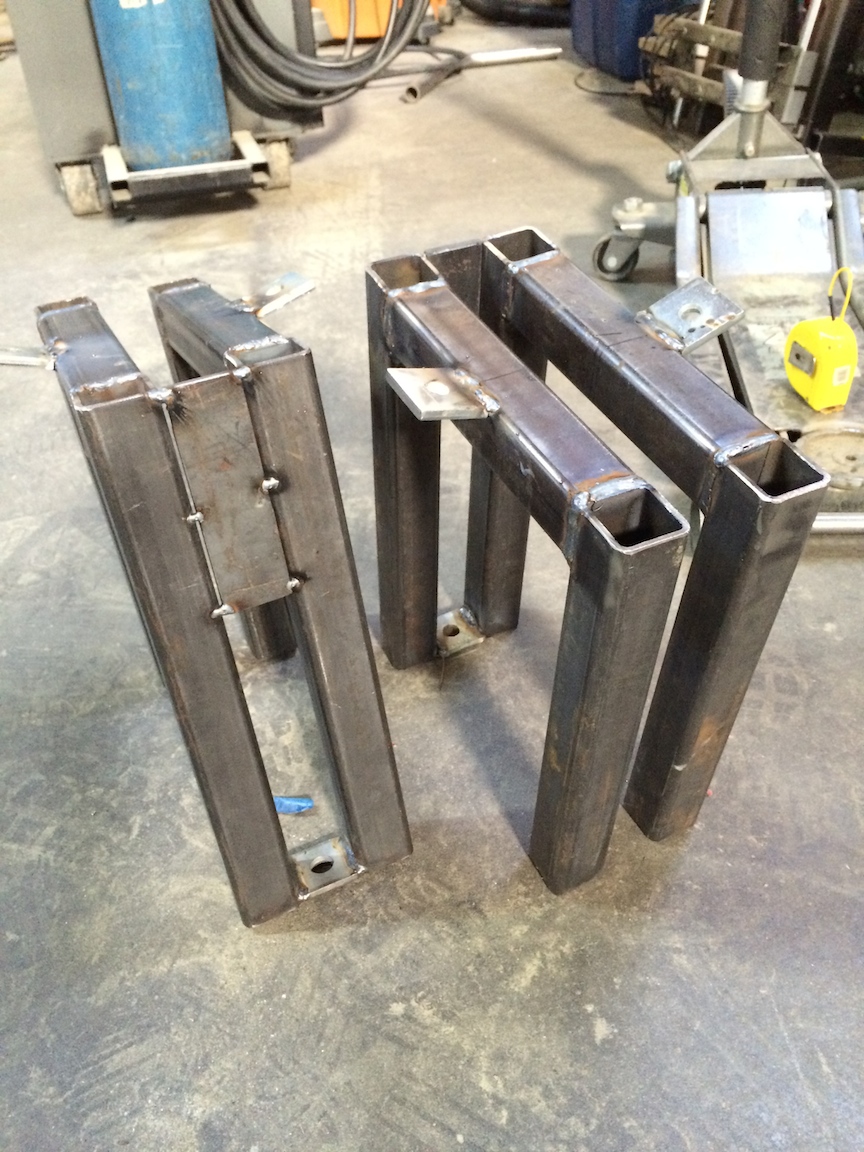

The “delay” speaker will be delayed to time align with the main speaker.
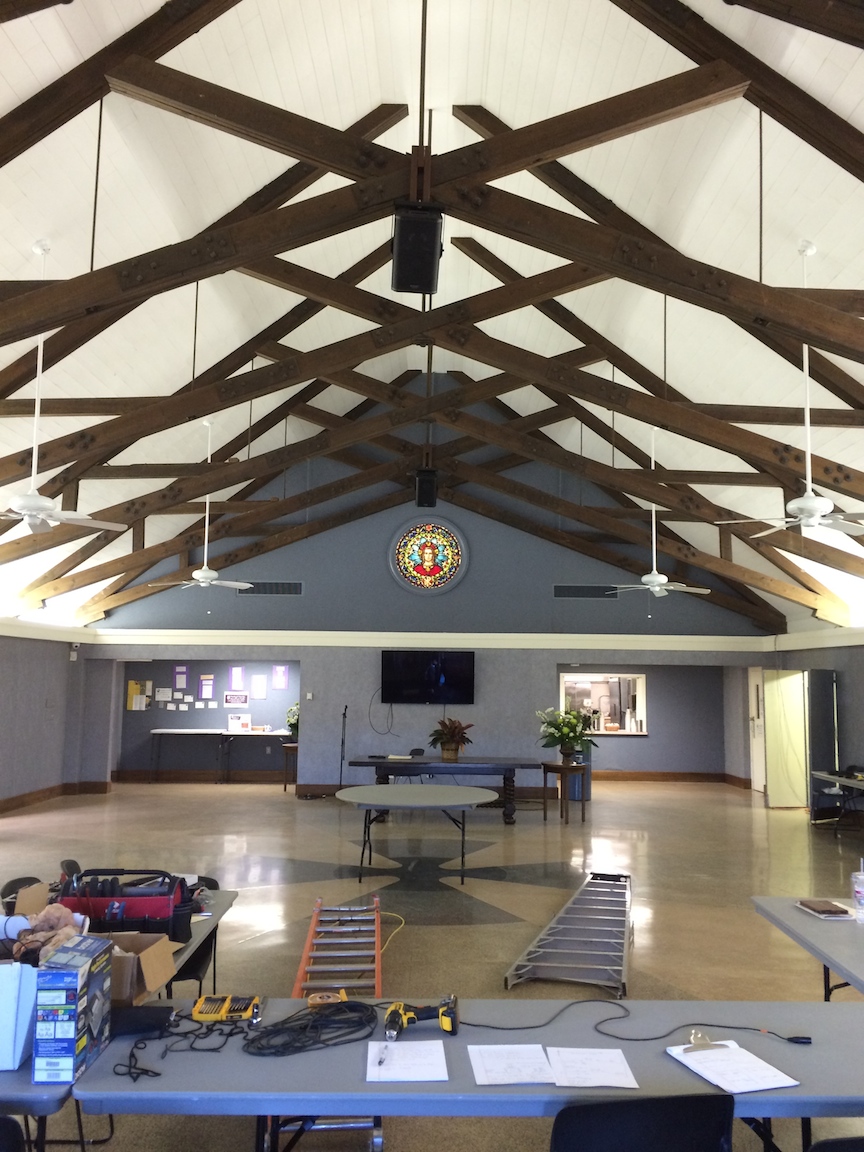
After finishing the wiring install and landing everything on the Yamaha 0/1V mixer, it was time to EQ the system and then set the delay time for the delay speaker. As is typical, the system without any EQ was excessive in the low mid frequency range. Here is what the single main speaker measured like on axis.
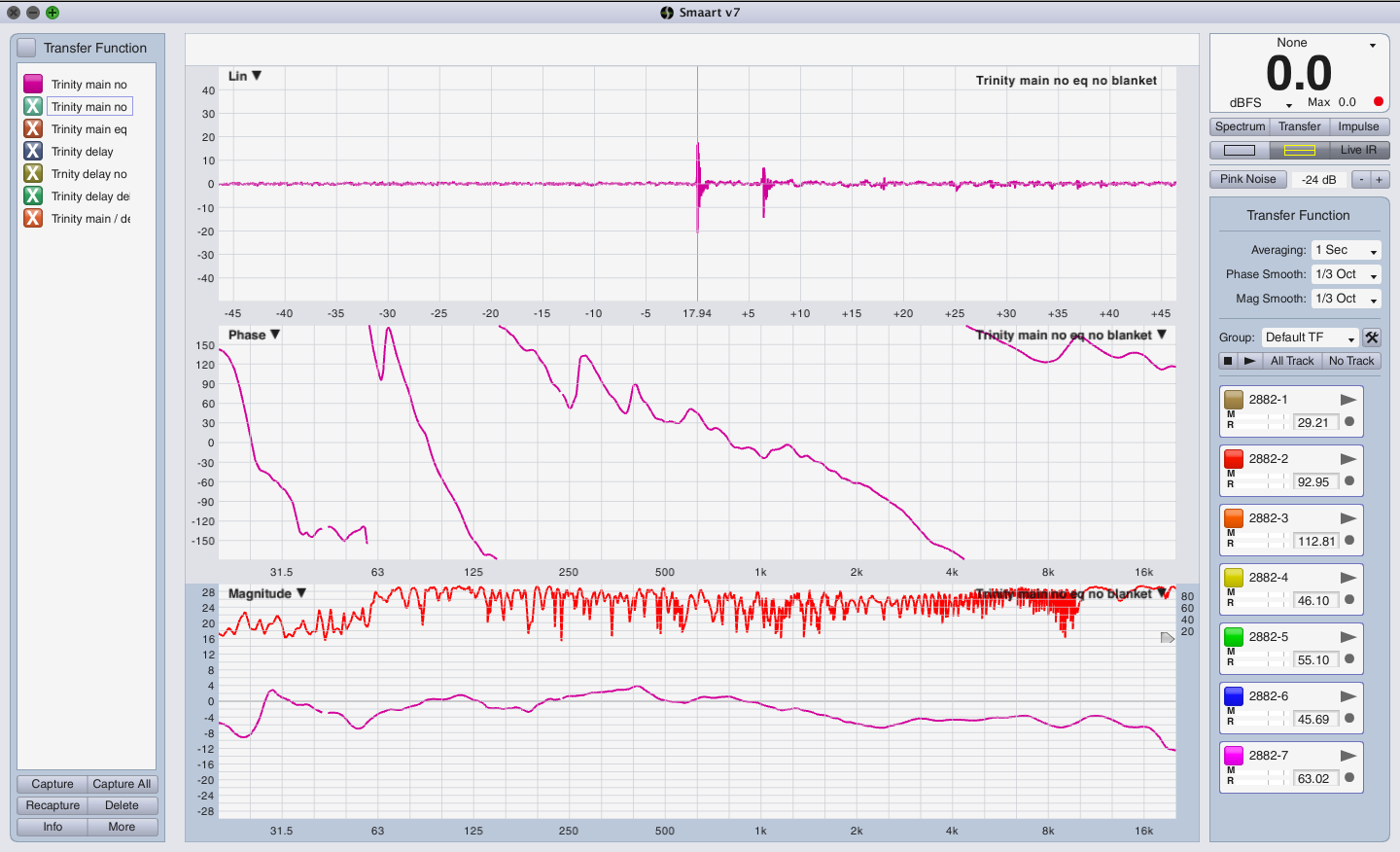 You will notice that there is a strong reflection which is due to the table in between the speaker and the mic. So I went and found a blanket and threw it over the table. This is the measurement now. Notice how coherence has greatly improved and the frequency response has changed.
You will notice that there is a strong reflection which is due to the table in between the speaker and the mic. So I went and found a blanket and threw it over the table. This is the measurement now. Notice how coherence has greatly improved and the frequency response has changed.
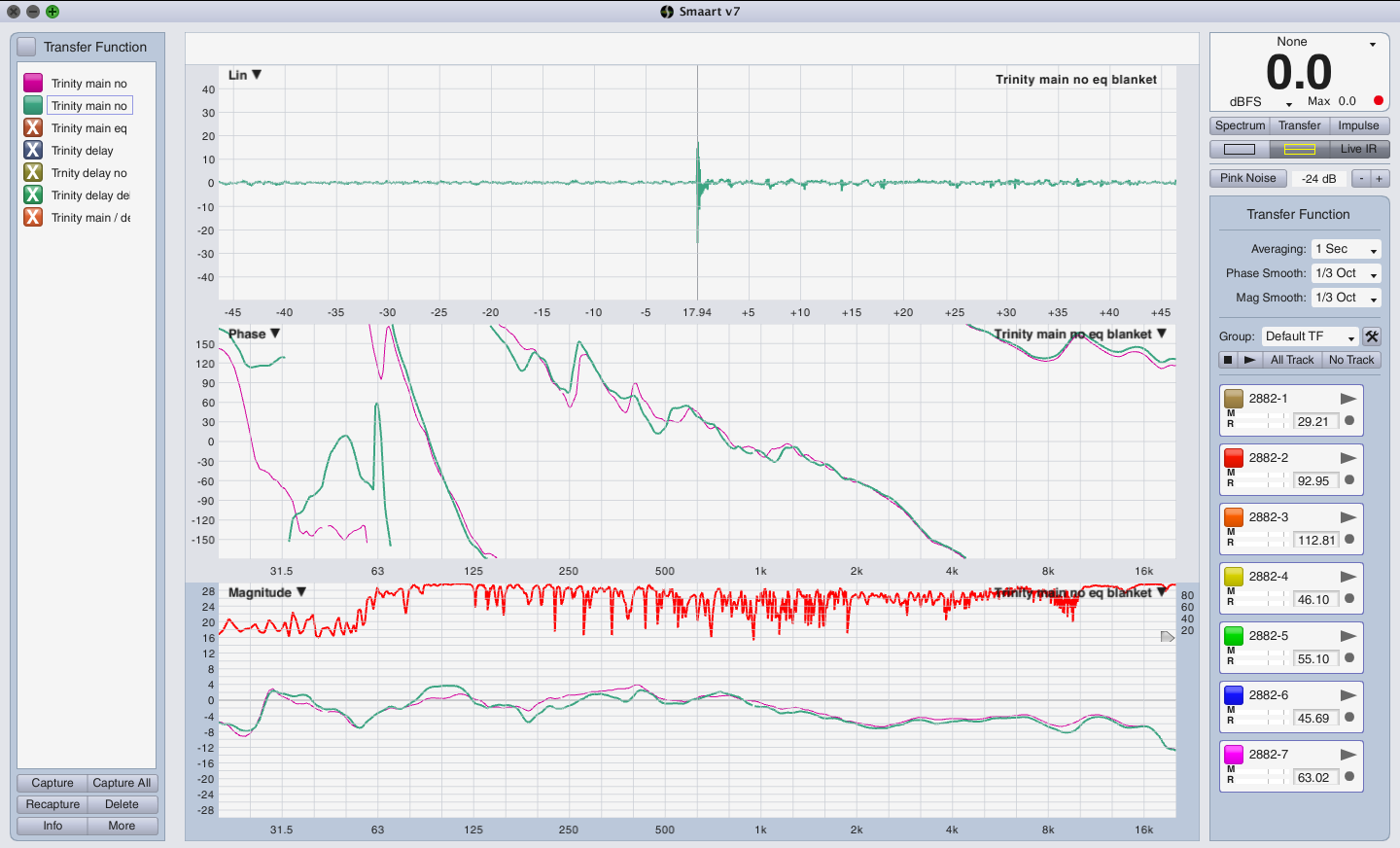
This is the response of just the main speaker pre and post EQ. 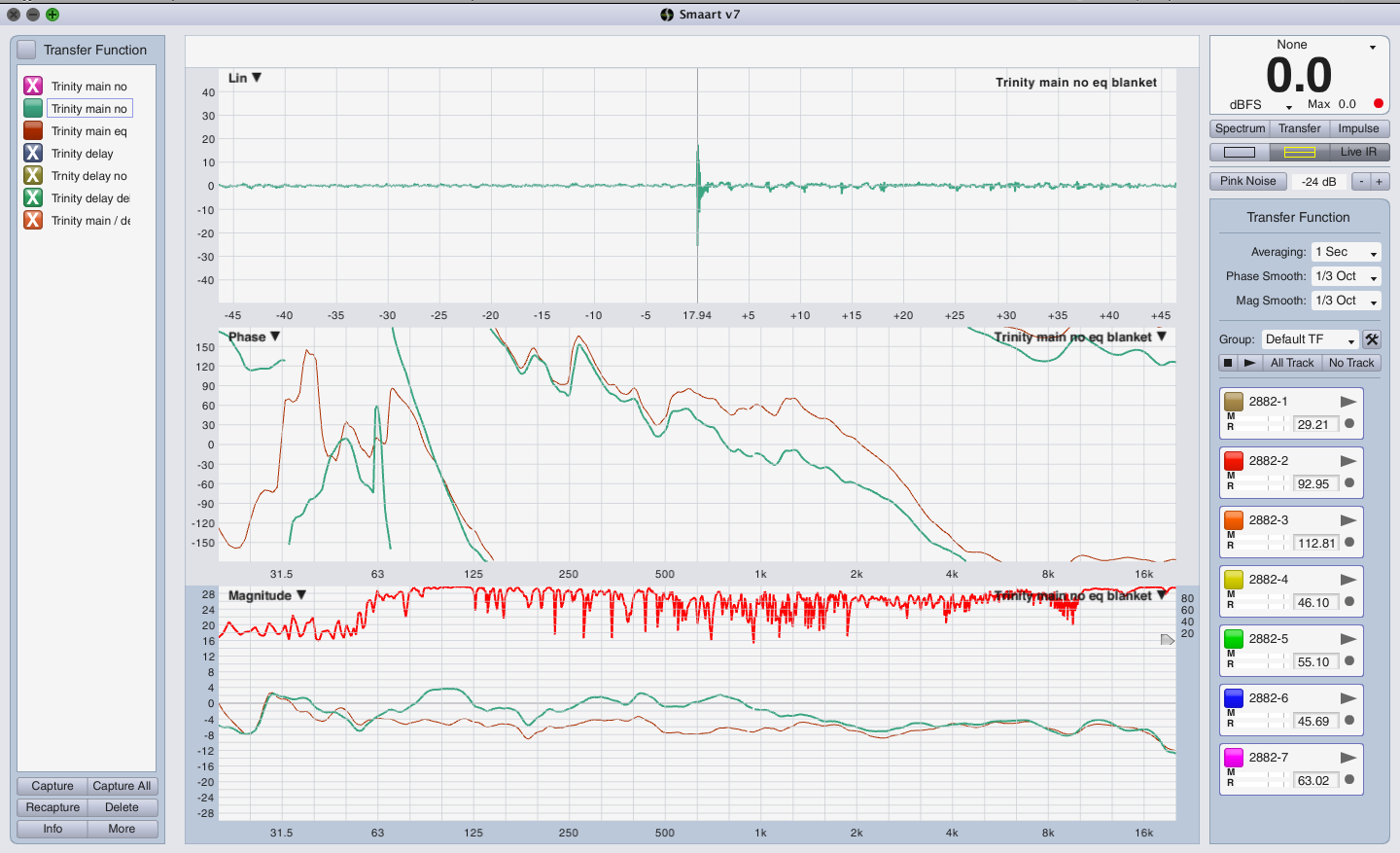 I’m using the stereo L/R to feed the two speakers so there is no way of having an eq setting for the L output and a different eq setting for the R output. The speakers match and are in roughly the same acoustic space. Hopefully they will work well with the same EQ. Here are the two measurements.
I’m using the stereo L/R to feed the two speakers so there is no way of having an eq setting for the L output and a different eq setting for the R output. The speakers match and are in roughly the same acoustic space. Hopefully they will work well with the same EQ. Here are the two measurements.
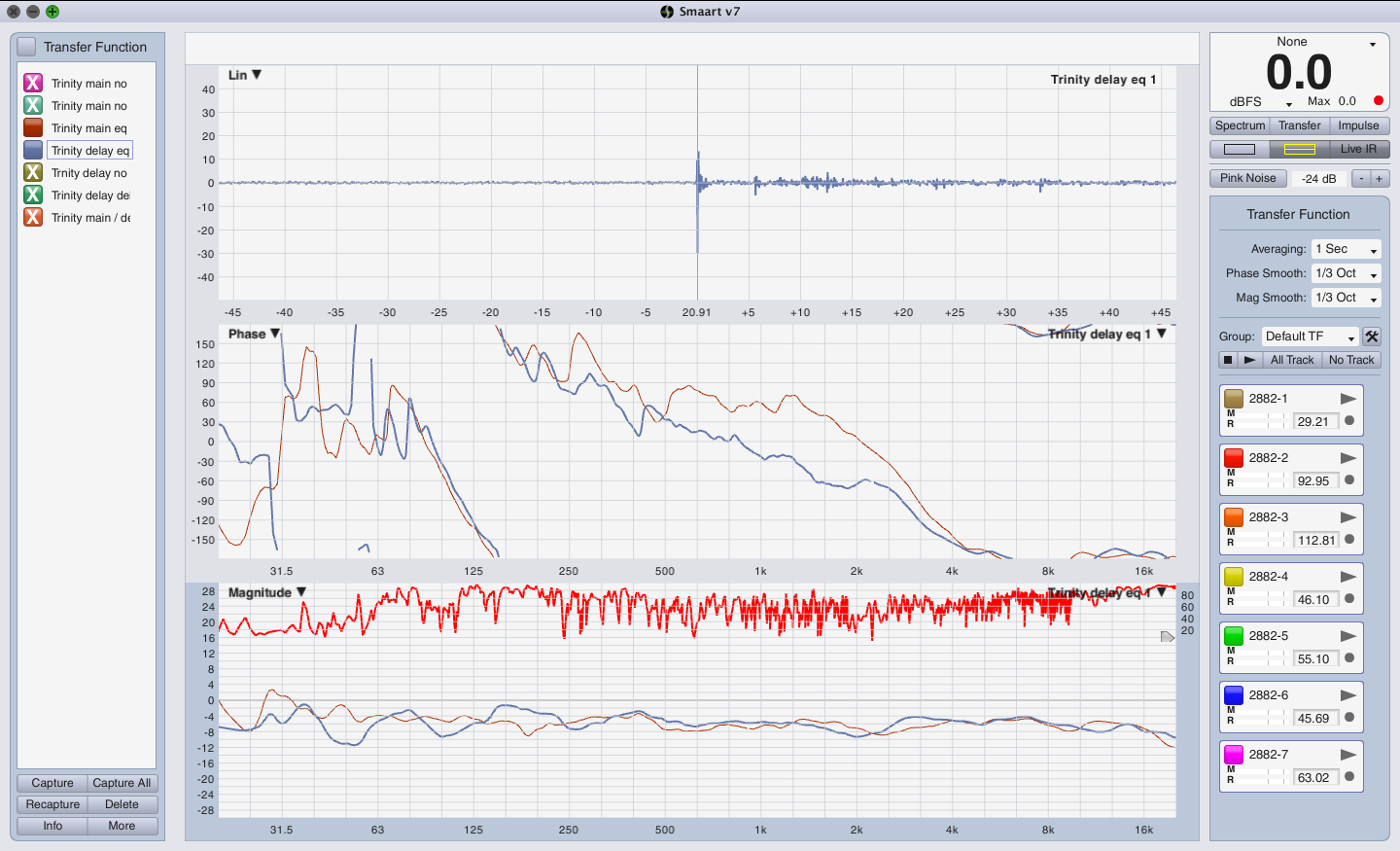 Next was to measure the main speaker at the transition zone between the main speaker and the delay speaker to get a base delay time. Then to measure the delay speaker to get that delay time. Obviously in this situation the delay speaker is going to be closer to the mic than the main speaker and so the delay speaker will need to be delayed. In this case the delay time turned out to be 16.1 ms, the difference between the main and delay speaker due to location. If the main / delay speakers are arriving early in comparison to the typical presenter location, we will delay both speakers back to the TV on the wall which will also help the imaging when a person is speaking into a microphone.
Next was to measure the main speaker at the transition zone between the main speaker and the delay speaker to get a base delay time. Then to measure the delay speaker to get that delay time. Obviously in this situation the delay speaker is going to be closer to the mic than the main speaker and so the delay speaker will need to be delayed. In this case the delay time turned out to be 16.1 ms, the difference between the main and delay speaker due to location. If the main / delay speakers are arriving early in comparison to the typical presenter location, we will delay both speakers back to the TV on the wall which will also help the imaging when a person is speaking into a microphone.

